Hidden throughout modern-day Kaohsiung are traces of its Qing Dynasty heritage. Some, like the fort on Cijin Island (旗津) and the impressive stone walls of the old fortified town in Zuoying District (左營), are more obvious; others are nothing more than a suggestive street name, or a narrow alleyway meandering through an otherwise regular arrangement of streets. The Old Intercity Road (雙城古道) offers a unique way of exploring Kaohsiung’s past while literally walking in the footsteps of inhabitants from centuries past.
FORTIFYING A TOWN
The Old Intercity Road begins in modern-day Zuoying District, where the Qing first established the seat of the Fongshan County (鳳山縣) government in 1684. Qing settlements in Taiwan were originally forbidden from being walled, but after an uprising destroyed the county government town in 1721, an earthen wall was erected. After yet another uprising ravaged it in 1787, it was decided to move the seat of government to another settlement further inland. This settlement became known as the New City of Fongshan County (鳳山縣新城), while the original settlement became known as the Old City of Fongshan County (鳳山縣舊城).
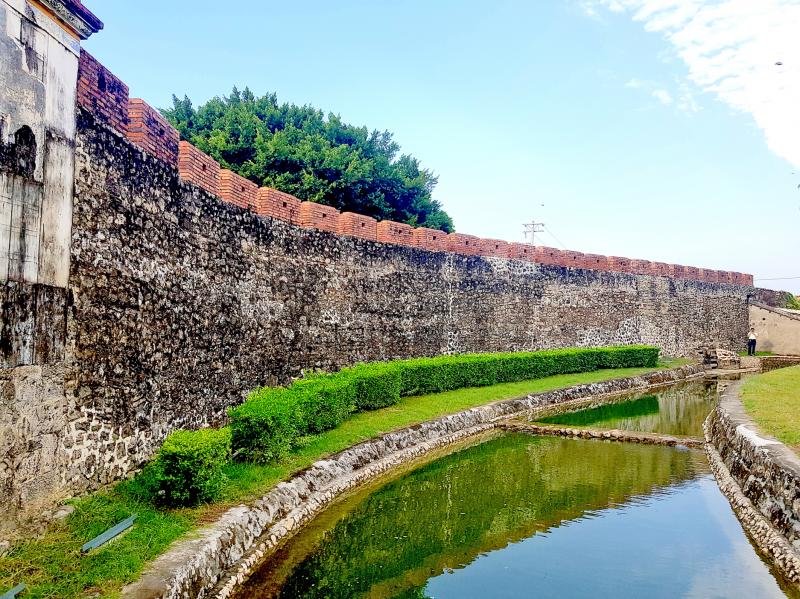
Photo: Tyler Cottenie
In the years that followed, traffic between the two settlements continued. The New City suffered from its share of attacks, and eventually the idea of fortifying the Old City with a stone wall and moving the government back again took hold. The stone wall was completed in 1826, but the government didn’t officially move back to the Old City for another 27 years. Meanwhile, the New City had erected its own walls and commerce was flourishing. For over a century, the Old Intercity Road was a vital link between these two population centers, for officials and commoners alike.
Before beginning the walk, the remains of the Old City’s walls in Zuoying District are worth checking out. Three of the original gates are still extant, as well as long sections of stone wall around the North and East Gates and a section of the city’s moat. A visit to The Center of Old Fongshan City History (見城館) inside the Old City walls is also highly recommended. It features a model of the Old City and its development, and a stunning multimedia presentation where the various iterations of city walls throughout the years rise out of or sink into the model floor, accompanied by other visual effects and narration.
OLD INTERCITY ROAD
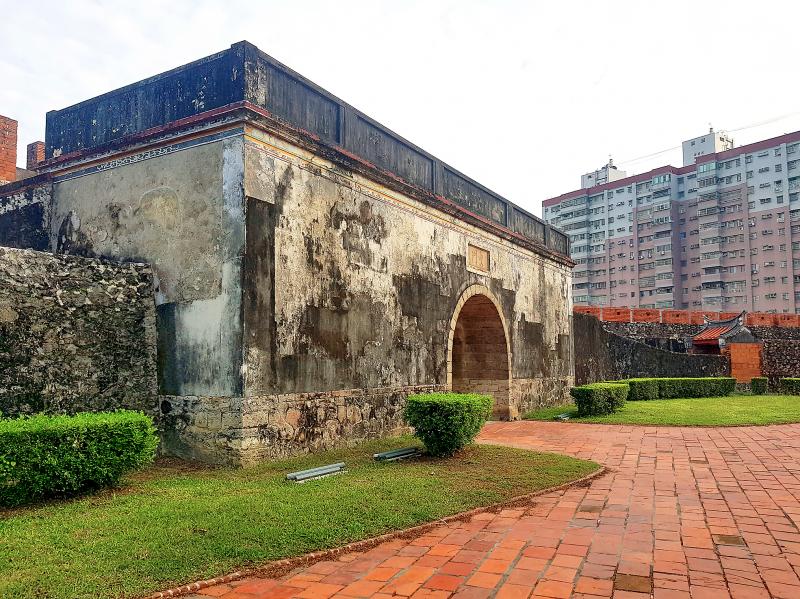
Photo: Tyler Cottenie
After exploring the remains of the Old City, leave the walled city through the East Gate, the starting point of the Old Intercity Road. At first, you will walk along the original route on the aptly named Dongmen Road (東門路: literally East Gate Road). However, this road is soon interrupted by a strip of railway land and a detour is required to get around to the other side, where Dongmen Road continues. With the TRA tracks now underground in Kaohsiung, the two halves of the road may soon be reconnected, restoring the continuous path leading to the East Gate that existed for over two centuries.
Next is the most interesting part of the entire route. Those who have been to Kaohsiung’s Ruifong Night Market (瑞豐夜市) and have an eye for detail may have wondered why the entire market seems to be laid out in parallel rows, except for one lane running at a shallow angle through the south-west side of the market, awkwardly dividing it. This angled lane is in fact part of the old road between the two seats of the former Fongshan County government. Where Qing officials once rode horseback on business and peasants urged cattle forward to market, tourists now snack on gua bao (割包), a steamed flat bun stuffed with stewed pork, and sip bubble tea.
Continuing eastward, except for a couple of small alleyways that seem completely out of place, the original route in this section has been erased and replaced by modern city streets in a grid. The Old Intercity Road crossed Love River (愛河) right beside the location of the current bridge on Zihyou Road (自由路), but the original Qing-era bridge has been dismantled with no trace remaining. East of the river, the original route follows modern-day roads for most of the next several kilometers, except where it passes through the schoolyards of two schools and is interrupted by National Freeway 1.
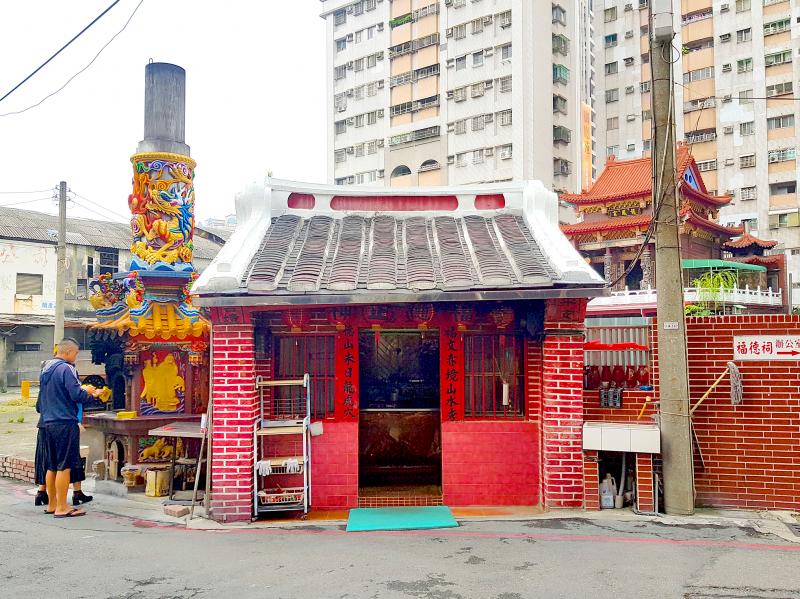
Photo: Tyler Cottenie
As one enters Fengshan District (鳳山區), the route is briefly lost in the middle of a park before picking up again in a strange, narrow passageway between two residential properties that is barely wide enough for two people to walk abreast. It then passes two religious structures named for one of the original Han settlements in the area, Chishan (赤山). The first is a quaint roadside temple, the Chishan Lower Village Fude Shrine (赤山下角頭福德祠). Soon after this, one arrives at perhaps the largest religious structure on the route, the Chishan Wenheng Temple (赤山文衡殿). Though the current structure is recent, the first temple was established here in 1795 during the reign of the Qianlong Emperor.
Finally, three to four hours after leaving the Old City’s walls, one reaches the original entrance to the New City of Fongshan County, which is now the downtown core of Kaohsiung’s Fengshan District. Though the North Gate here was dismantled during the period of Japanese rule and only a stone marker remains today, the site is impressive in a different way: It is now the site of the enormous, visually-stunning Fengshan Presbyterian Church. This 21st-century building stands in stark contrast to the 19th-century gate and moat at the other end of the Old Intercity Road.
For those who haven’t had their fill of local history, there are Qing-era sites in the New City worth exploring while you’re in the area. Though no sections of the wall remain, there are still several cannon emplacements, the Fongyi Academy (鳳儀書院), Taiwan’s second-oldest Longshan Temple (龍山寺), and one of the original stone gates, which is still open to two-wheel traffic.
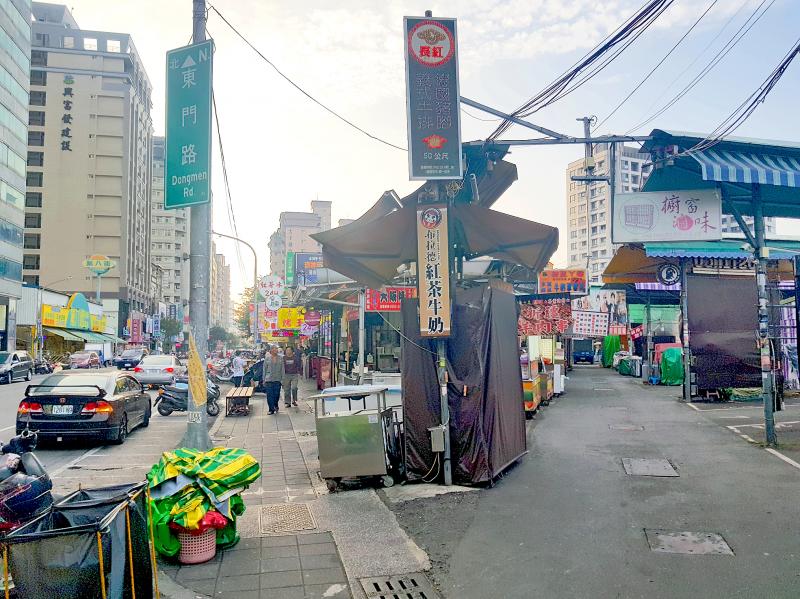
Photo: Tyler Cottenie
Though much of the scenery along the Old Intercity Road is simply modern cityscape, it is still an effective gateway into understanding Taiwan’s rich history. For more information, a pamphlet on the route is available in Chinese at the Kaohsiung Cultural Center and the Takao Railway Museum. The Old City and New City endpoints can be accessed from the Zuoying (Jiucheng) and Fengshan TRA stations, respectively.
Route map: bit.ly/35jOVmu
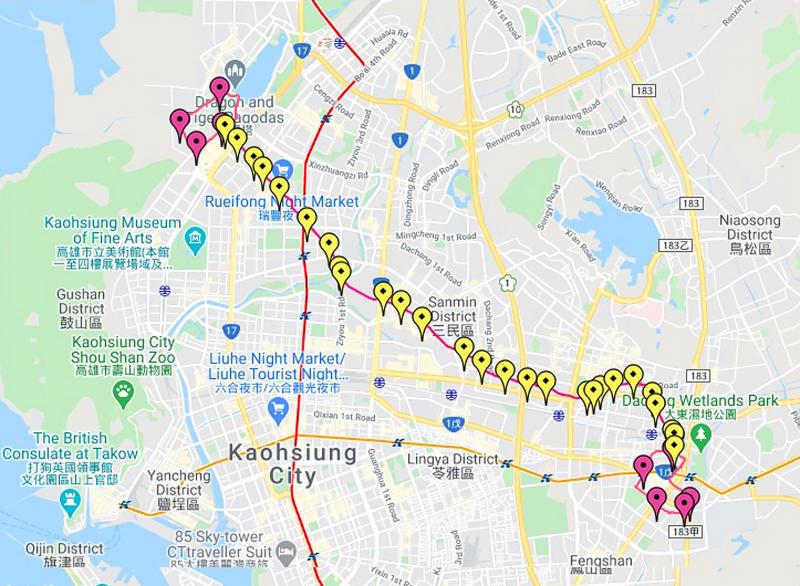
Photo: Screengrab

Most heroes are remembered for the battles they fought. Taiwan’s Black Bat Squadron is remembered for flying into Chinese airspace 838 times between 1953 and 1967, and for the 148 men whose sacrifice bought the intelligence that kept Taiwan secure. Two-thirds of the squadron died carrying out missions most people wouldn’t learn about for another 40 years. The squadron lost 15 aircraft and 148 crew members over those 14 years, making it the deadliest unit in Taiwan’s military history by casualty rate. They flew at night, often at low altitudes, straight into some of the most heavily defended airspace in Asia.

Many people in Taiwan first learned about universal basic income (UBI) — the idea that the government should provide regular, no-strings-attached payments to each citizen — in 2019. While seeking the Democratic nomination for the 2020 US presidential election, Andrew Yang, a politician of Taiwanese descent, said that, if elected, he’d institute a UBI of US$1,000 per month to “get the economic boot off of people’s throats, allowing them to lift their heads up, breathe, and get excited for the future.” His campaign petered out, but the concept of UBI hasn’t gone away. Throughout the industrialized world, there are fears that

Taiwan’s democracy is at risk. Be very alarmed. This is not a drill. The current constitutional crisis progressed slowly, then suddenly. Political tensions, partisan hostility and emotions are all running high right when cool heads and calm negotiation are most needed. Oxford defines brinkmanship as: “The art or practice of pursuing a dangerous policy to the limits of safety before stopping, especially in politics.” It says the term comes from a quote from a 1956 Cold War interview with then-American Secretary of State John Foster Dulles, when he said: ‘The ability to get to the verge without getting into the war is

Like much in the world today, theater has experienced major disruptions over the six years since COVID-19. The pandemic, the war in Ukraine and social media have created a new normal of geopolitical and information uncertainty, and the performing arts are not immune to these effects. “Ten years ago people wanted to come to the theater to engage with important issues, but now the Internet allows them to engage with those issues powerfully and immediately,” said Faith Tan, programming director of the Esplanade in Singapore, speaking last week in Japan. “One reaction to unpredictability has been a renewed emphasis on